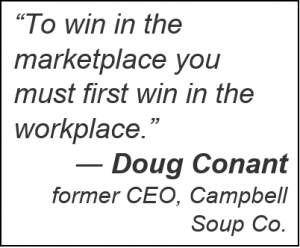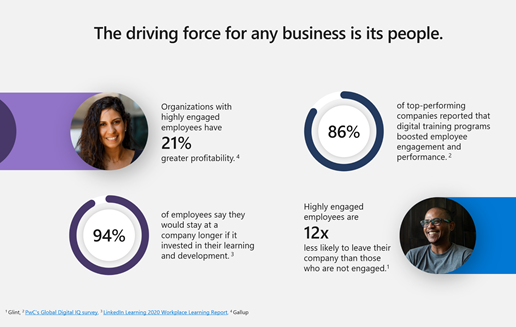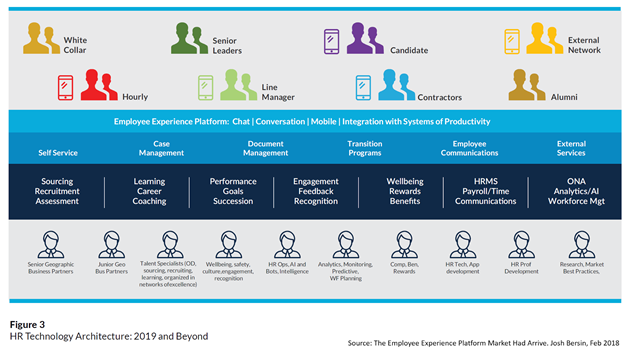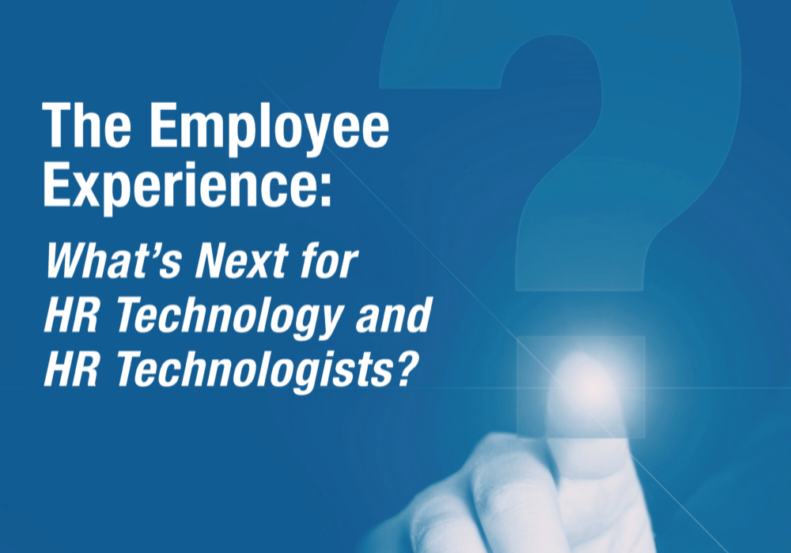The spotlight is shining brightly on the concept of employee experience (EX) and a number of software products with the same moniker have come to market recently that are well worth understanding.
Companies see strong correlations on many metrics that are driving the employee experience, including higher employee satisfaction and lower turnover, better customer satisfaction and even higher Earnings per Share growth.

A few major players in the EX space, including ServiceNow, Workday, and SAP, have had various EX offerings for a while, and Oracle recently made their EX splash with Journeys. However, with the additional gravitas of Microsoft launching their Viva Employee Experience Platform in Feb 2021, EXP software has gone mainstream.
If you are not already considering adding EX solutions to your existing tech stack, it’s a rapidly growing area that is worth looking into.
The Rise of Employee Experience as a Concept and a Platform
While it might seem a bit pedantic to start by defining the basics of an Employee Experience (EX) solution or platform, the simple fact is that if you ask 10 people to explain the Employee Experience, you’ll get 11 answers.
Definitions include reducing employee burnout, focusing on employee well-being, providing more learning and growth, improving employee communications, strengthening corporate culture, providing better access to content by frontline workers, to general ideas of personal and professional growth, empowerment and individual connections.
The term Employee Experience first appeared in the mainstream HR lexicon when Josh Bersin published the white paper “The Employee Experience Platform Market Has Arrived” in 2018. This report outlined, among other things, the evolution from HR Service Delivery to Integrated Employee Experiences. Josh described EXP back then as, “the middleware connectivity, case management, process management, and knowledge management to help companies give their employees a single place to manage work-related tasks, HR requirements, and job transitions.”

Many of the components that make up the vision of EX that Josh presented had been floating around for years – and sounded a lot like an HR-portal on steroids combined with robust case management. But these ideas – and associated technologies – haven’t been packaged in a cohesive, holistic manner and labeled as such (see the blue bands in figure 3). Willis Towers Watson, for example, was addressing many of these ideas in their HR portal over 10 years ago.
The idea of a better employee experience started to gain increased traction in 2019 amidst widespread acknowledgement that employees were becoming overworked, unemployment was very low, the war for talent was raging, the rapid expansion in innovative cloud solutions was actually making it harder for employees to find their way online, and the large technology platform vendors were looking for the next big thing. While there were a plethora of point solutions providing individual aspects to meet EX needs, they were not well integrated. EXP is, essentially, a better way to package and deliver many of these pre-existing solutions (coupled with new advances in AI).
Ironically, while software vendors were hard at work ideating EXP solutions (much of which consists of repackaging and better integrating features and functionality that already existed), corporate buyers of these solutions were abruptly sidelined in March 2020 when the pandemic hit – and companies had to shift focus to quickly transform basic business operations as vast swaths of workers abruptly started working from home.
There was no time to select, procure and implement new solutions – no matter how helpful they would have been at that time. Nor was there time to think strategically about major platform acquisitions. Heck, there was little to do other than an all-hands-on-deck scramble to enable employees to keep working while at home, and keep others safe who need to remain at the workplace.
As the summer of 2020 wore on and HR and IT leadership realized that the pandemic-driven business transformation not only impacted all aspects of an employees’ day, but that the likelihood of going back to the pre-pandemic ways of work was highly unlikely. In fact, the employee experience has been the perfect moniker to address many of these previously un-related (and technically un-integrated) aspects of work – and the workplace experience – that were transforming before our eyes.
Fast forward to today and not only are many of the components of Employee Experience that Josh first outlined now a part of these solutions, but increasingly the issues associated with the hybrid workplace are also being included – further expanding (some would say, convoluting) EX as a clearly defined solution set.
Microsoft, McKinsey and ServiceNow, to name a few, have recently published white papers on Employee Experience and studies on the impact of hybrid work on the employee experience. There’s no going back to the way work was done – nor the way HR services were delivered – before the pandemic.
A clear example of the confluence of Employee Experience and hybrid work are the 7 major trends that are highlighted in Microsoft’s 2021 Work Trend Index report:
- Flexible work is here to stay
- Leaders are out of touch with employees
- High productivity metrics are masking an exhausted workforce
- Gen Z is at risk and needs to be re-energized
- Shrinking networks are endangering innovation
- Authenticity will spur productivity and well-being
- Talent is everywhere in a hybrid world
It’s notable that with the rise of EX solutions, and the rapid growth of hybrid workplaces, there has also been a shift in terminology – the term “HR Tech” is increasingly being called “Work Tech,” and the vision for the Employee Experience has broadened well beyond the old concept of the HR Portal as the single point of access, or single pane of glass for all HR solutions.
Today virtually all the major HR platform vendors offer an EXP solution in some shape or form (again, depending upon how EX is defined), as well as the new player on the block, Microsoft, and with myriad startups that are creating innovative solutions to plug into these foundational platforms.
For the major tech vendors, EXP is more than just a repackaging and expansion of their existing solution stack coupled with a sprinkling of new features to create a more seamless user experience. Each sees it as a way to upsell new licenses and seek to establish (or defend) their position of their core platforms.
While each comes at it from a slightly different perspective, the fact remains that the expectations of the C-Suite are going to be measured by metrics they tie back to key many EX elements (akin to the rise in focus on measuring and managing the customer experience). And companies are going to be held more accountable for a better EX by their employees – who vote with their feet – whether or not the companies have to tools to do it.
The bottom line is this: the choice of an EX solution has as much to do with your vision of what the Employee Experience is, as well as how well a particular vendor’s solution works within your existing IT ecosystem and finding tools that you can use to design, manage and measure the employee experience.
At the end of the day, employees have come to expect digital tools that make their work experiences as seamless and comfortable as being a customer. It appears that the investment in technology to make this happen is finally having it day.



